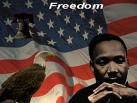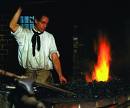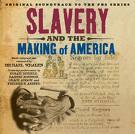James Easton and Homeopathy
January 30, 2008
 James
Easton (?1820- ?1890) was the first black
homeopath
in America. His father James Easton senior was a leading
abolitionist
and known a the Black
Lawyer,
and his brother Hosea Easton was also a political
activist.
James
Easton (?1820- ?1890) was the first black
homeopath
in America. His father James Easton senior was a leading
abolitionist
and known a the Black
Lawyer,
and his brother Hosea Easton was also a political
activist.
James Easton senior’s grandson Benjamin Roberts, one of the first African American printers led an initially unsuccessful but ultimately revolutionary court case Roberts v. the Boston School Committee to allow his daughter to be admitted to a white school.
James Easton’s brother in law Robert Roberts became politically active when his brother in laws were sold back into slavery after the American Civil War.
Another relative Paul Cuffe is most commonly known for his work in aiding free Negroes who wanted to emigrate to Sierra Leone.
His son (?) James Fender Easton 1879 - was also a doctor and was examined by the West Virginia Dept. of Health in 1915
 James Easton Snr 1754 - 1830 was a:
James Easton Snr 1754 - 1830 was a:
a “Revolutionary soldier” whose ambitious manual labor school for African American youth was undermined in the 1820s by “white” prejudice and “black” apathy… Two of these early emancipated slaves, Richard and Mary Eas(t)on, lived in a small village near the town of Middleborough, where in 1754 Mary gave birth to James Easton.
After 1754, the family disappears temporarily from the historical record, suggesting that the Eastons moved to one of the several small Indian communities just outside Middleborough; since 1694, the town had banned Indians from living within its boarders. When James Easton married Sarah Dunbar, a woman of possibly similar mixed-”race” heritage, the Easton name returned to visibility…
When James Easton joined the patriot cause, however, his quest for better prospects outran his equalitarian principles. Like many other dark-skinned New Englanders who enlisted into the military, he declined to identify himself as African American, Indian, or as anything else in the “white” vocabulary for designating color distinctions. It was a choice that he and thousands of others, Indian and African-descended alike, made for practical reasons.
Heavy legal sanctions against Indians’ rights to assemble, bear arms, and trade freely would have completely nullified their prospects for Revolutionary citizenship and relegated them to isolated enclaves. Seeking to destroy these barriers, numerous Wampanoags and Narragansetts, groups from whom James Easton descended, rallied unannounced to the patriot cause…
What did Easton believe he had fought for? What new kind of world did he think the Revolution should bring to him and his growing family? Nothing in his own words survives to instruct us, but two closely related sources provide reliable answers.
Easton’s son Hosea published the first of these, his Treatise, in 1837, and his views on exactly these questions most likely expressed the opinions of his deeply revered father, who had died only seven years earlier. The scattered records that document James Easton’s remarkable career constitute the second…
Although James Easton left no written tract of his opinions, his public actions, captured in other records, express his determination no less eloquently. In 1800, James Easton led his family in its first public stand against segregation. The event took place at Bridgewater’s Fourth Church of Christ.
The controversy began with the construction of a “Negro gallery,” in which the “white” congregation forced the Eastons and all other dark-complected members to sit… James Easton refused to submit; church records mention “a disturbance in time of public worship,” deceptive language for the Easton family’s act of defiance.
Rather than sit in the “Negro gallery,” Easton bought a family pew from a sympathetic “white” member and occupied it until exasperated “white” congregants ejected them by force.. .. the first of six clearly documented Easton family protests between 1800 and 1827—and it is likely even more took place. Most appear only briefly in the church records…
As monumental as his public stand against segregation was, it constituted neither the whole of his life nor of his work for social change. Self-educated, Easton mastered the arts of commercial iron-working—which explains his choice of North Bridgewater as his home. Practically no people of color other than the Eastons lived in the area, which meant the family lacked social as well as financial capital.
Nevertheless, the location possessed clear professional advantages: it had plentiful raw materials for smelting and casting, and its proximity to Boston—twenty-six miles away—insured Easton access to clients, markets, and the city’s activist community. Soon after setting up house in the town, he established his own shop, which specialized in the manufacture of edge tools (plows, axes, and so forth), anchors, sea chains, and other seafaring gear, and schooled his sons in the business.
The Eastons also made special-order items, such as grillwork for Boston’s new Tremont Theatre and track for the new Marine Railway (upon which workers wheeled newly constructed vessels from shipyards to launching berths). As a contractor and skilled artisan, he possessed the dignified bearing of a gentleman at ease in Boston’s blossoming commercial culture.
“He was welcomed in the business circles of Boston as a man of strict integrity,” wrote William Nell, “and the many who sought his advice on complicated matters styled him ‘the black lawyer.”
James Easton’s success did not, however, single him out as a unique figure. His imposing leadership and unimpeachable reputation, rather, identified him as a member of a “colored” elite that rose to prominence soon after the Revolution in cities across the eastern seaboard.
A civic-minded group of businessmen, clergymen, and educators, these accomplished individuals preached the values they emphatically practiced of “self-improvement, piety and personal rectitude.” They founded the churches, schools, fraternal groups, and voluntary associations that solidified communities of color throughout New England.
From the close of the Revolution through the 1820s, men such as Easton exhorted all people of color to “uplift” themselves by embracing the “respectable” values of temperance, thrift, religiosity, and, above all, education.
Well suited to the challenges of James Easton’s era, this ideology of moral rectitude and self-improvement underpinned the rising “colored” communities of the North. Through it, Easton and his peers sought to guarantee realization of the Revolution’s egalitarian promises, even as “white” racial prejudice deepened throughout New England.
Capitalist in economic spirit and republican in social vision, this ideology personally empowered Easton as it expressed so well his fervent American nationalism, forged in the Revolution by “whites” and dark-skinned patriots like himself.
Subscribing to these beliefs came at a price. Easton’s claims for republican equality and his rise to leadership in the affairs of “colored Americans” necessitated that he suppress his “Indian” (non-citizen) heritage. One might speculate that his searing hatred of racial bigotry arose in part from having been driven to so painful a choice.
Whatever his deeper uncertainties, Easton’s commitment to “uplift” inspired the extraordinary project he undertook in the mid 1810s. His decision to incorporate a manual labor school for promising “colored youth” into his family-run foundry represented a visionary experiment unprecedented for its time. It also projected influence five decades into the future, becoming a touchstone in his grandson’s own path-breaking struggles against segregation.
Easton designed the school to combat illiteracy and unemployment among young “men of color.” As Easton’s eldest son, James, Jr., explained to his wealthy merchant relative, Paul Cuffe, when seeking to borrow $1,000 for the school in 1816, “for Wount [want] of Sufficient Education we fail of accomplishing Eny Cind [any kind] of bisnis of a Publick nature. Besides, ignorance Produces a great Deel of jealousy.” (James, Jr., would improve his spelling before he achieved distinction as one of the nation’s first African American practitioners of homeopathic medicine.)
 (picture of William C.
Nell)
James Easton’s grandson Benjamin Roberts carried on the fight:
(picture of William C.
Nell)
James Easton’s grandson Benjamin Roberts carried on the fight:
This familiar and important story ultimately set formidable precedents in the struggle for racial equality and in the history of American law. The plaintiff in Roberts v. the Boston School Committee sought admission of his five-year-old daughter, Sarah Roberts, into the city’s all-”white” public school system and an end to the grossly inferior facility reserved exclusively for “colored” Americans (as these Bostonians preferred to call themselves).
By demanding the integration of all Boston public schools—and six hundred dollars in damages—Roberts’s suit began a seven-year battle that led first to stinging defeat and then to unexpected victory.
 Sarah’s Long Walk:
The Free Blacks of Boston and how Their Struggle
for…
by Stephen Kendrick and his son, Paul.
Sarah’s Long Walk:
The Free Blacks of Boston and how Their Struggle
for…
by Stephen Kendrick and his son, Paul.
The never-before-told story of the African-American child who started the fight for desegregation in America’s public schools. One fall day in 1848, on windswept Beacon Hill in Boston, a five-year-old girl named Sarah Roberts walked past five white schools to attend the poor and densely crowded all-black Abiel Smith School.
Incensed that his daughter had been turned away at each white school, Benjamin Roberts resolved to sue the city of Boston on her behalf. Thus began what would be a more than one-hundred-year struggle that culminated in 1954 with the unanimous decision in Brown v. Board of Education to desegregate America’s schools.
Today, few have heard of the Roberts case or of the black abolitionist printer whose love for his daughter started it all, but now, with Sarah’s Long Walk, readers can learn about one black community’s heroic struggle for equality.
Sarah’s Long Walk recovers the stories of white and black Boston; of Beacon Hill in the nineteenth century; of twenty-four-year-old Robert Morris, the black lawyer who tried the case; and of all the people who participated in this early struggle to desegregate Boston’s schools.
 James Easton’s
brother in law Robert Roberts wrote a book The House Servant’s
Directory
(1827). One of the first books published by an African American, the
book went through three editions, the last released in
1837:
James Easton’s
brother in law Robert Roberts wrote a book The House Servant’s
Directory
(1827). One of the first books published by an African American, the
book went through three editions, the last released in
1837:
Robert Roberts was born in Charleston, South Carolina in 1777. Whether he was born of slaves or free born is not known. Much about his life has been pieced together through letters and public records, but it is certain that Roberts led a successful life as a valued servant, an active, prominent member of Boston’s African-American community, a prosperous owner of property, and a father. By the time he arrived in Boston, in 1805, he possessed marketable skills as a manservant, and could read and write. He may have come north with one of his employers, the Boston financier Nathan Applegate, who visited Charleston in 1802-1804. In December 1805, soon after arriving in Boston, Roberts married Dorothy Hall of Exeter, New Hampshire. Hall was the daughter of Jude Hall, the famous black Revolutionary War veteran who fought at the Battle of Bunker Hill. Despite his distinguished service, three of Jude’s sons had been kidnapped and sold into slavery. Roberts and the Hall family tried in vain to rescue the sons. Roberts wrote an affidavit years later, in 1833, to the head of the Boston Anti-Slavery Society, recalling how the family was “kept running from one lawyer and judge to another.” (Around 1810, James, Aaron and William Hall were kidnapped and sold into slavery. Robert immediately began to solicit the legal advice of several Boston lawyers. But they had no intention of helping him or his in-laws. In a statement made to the head of the Boston Anti-Slavery Society, Roberts said that he and Mr. Hall had been trying to locate and rescue the three brothers but that the lawyers were involved in a conspiracy to undermine his efforts). The injustice brought home in tragic, personal terms the widening political chasm between North and South and how tenuous freedom was for African Americans, even for the sons of war veterans… In 1813 Roberts married Sarah Easton, daughter of James Easton, a prominent blacksmith in Boston, a Revolutionary War veteran, and an abolitionist… and had twelve children with Sarah Easton, seven of whom survived to adulthood… In 1825 Roberts become butler to Christopher Gore (1758 - 1827), a prominent Boston attorney, statesman and diplomat who served as senator and governor of Massachusetts. A committed Federalist and supporter of strong Anglo-American relations, Gore believed in the aristocratic tradition of the trusted man-servant as well as the American free enterprise system which made such luxury obtainable. As one historian writes, “Together, Gore and Roberts were part of the refining of American dining behavior. Robert’s Directory was a precise manual of proper dining room conduct for an aspiring American elite.” Gore put Roberts in charge of his sumptuous country home, Gore Place, located in Waltham. One of the grandest neoclassical mansions in America, it was here that Roberts probably wrote The House Servant’s Directory, and to this day, the curator of Gore Place follows Roberts’ written instructions to reconstruct historically accurate place and table settings for tour groups.
In 1834 Roberts left his employment with the Gore’s and worked as a stevedore and:
Roberts also became a leading opponent of the well-meaning efforts of some white abolitionists to return ex-slaves to Africa. He wrote pamphlets denouncing the American Colonization Society (ASC).
In March, 1831, Roberts was the main speaker in a three-day forum at the African School House on Belnap Street, Boston. He was elected to be the spokesman to bring the concerns of those gathered at the schoolhouse to the attention of the ASC.
In his presentation before the ASC, he pointed out that returning ex-slaves to Africa would not improve their lives. Rather, it would make their lives more miserable. He suggested that if ex-slaves have to be transported anywhere, they should be sent to Haiti, the first black republic in the New World.
He also challenged the position of the ASC, that sending ex-slaves back to Africa would lessen slave trade. He pointed out that although the United States was a democracy and was supposedly more civilized than governments in Africa, some U.S. citizens were quite capable of kidnapping ex-slaves such as his brothers-in-law. What then would stop slave traders in a less civilized land from kidnapping the resettled ex-slaves and selling them back into slavery?
The fact that U.S. President James Monroe eventually adopted the resettlement proposal as a policy of his administration did not deter Roberts from continuing his opposition to the idea.
In these and other ways, Roberts became one of the chief advocates of equal rights for ex-slaves living in the United States.
was active as a campaigner against the American Colonization Society and as an abolitionist, serving on convention committees and writing articles for the Liberator. His most famous child, Benjamin Franklin Roberts, was the publisher of the Anti-Slavery Herald, a black abolitionist paper.
In 1848, Benjamin Roberts sued the City of Boston to force admission of his five-year old daughter into public school… Roberts died in December 1860, at age 83. He was counted one of the wealthiest African Americans in Boston at the time his death.
Hosea Easton (1799–1837), an important yet long neglected activist and intellectual. A black minister from New England, Easton rose to prominence during the 1820s and 1830s by joining in the struggle of free African Americans to resist southern slavery and secure racial equality.
From this experience he developed a deep understanding of the problem of “race” in the United States and became a trenchant critic of white supremacy and its devastating consequences.
